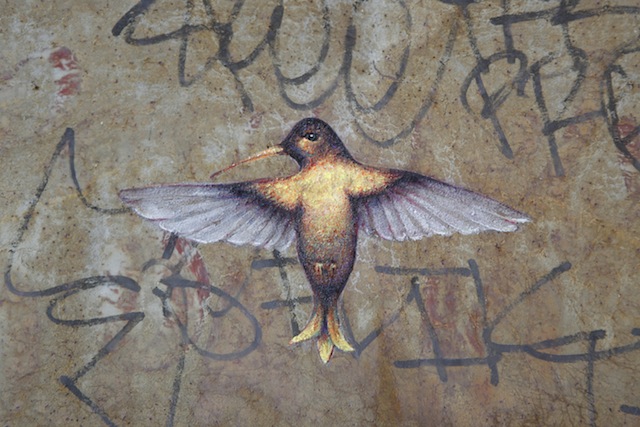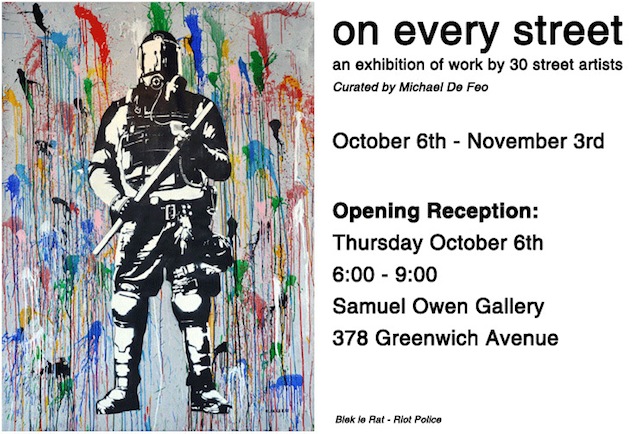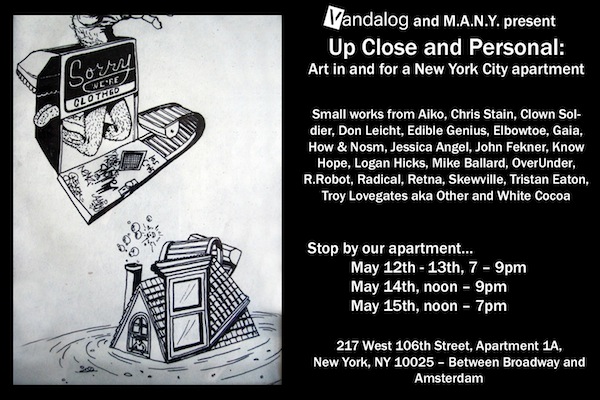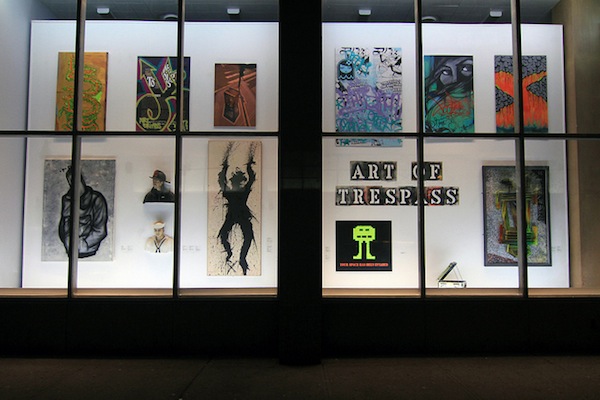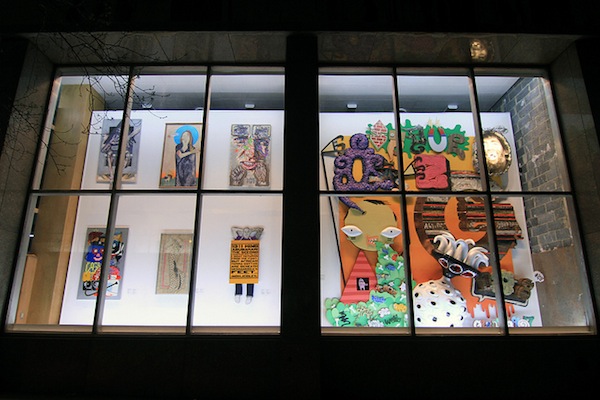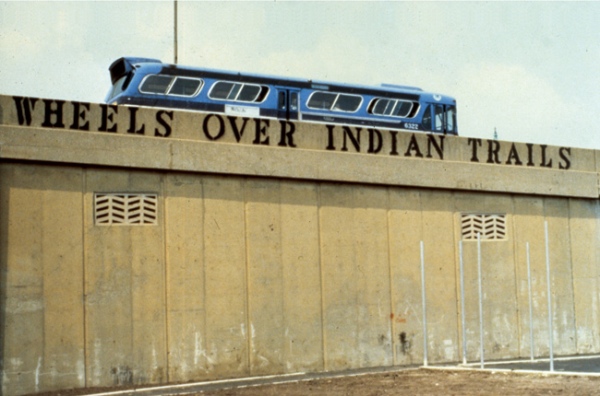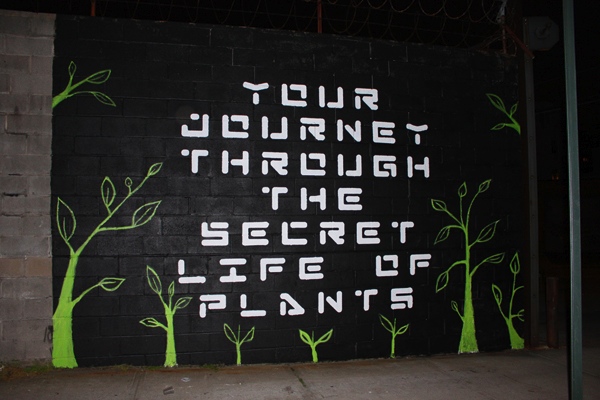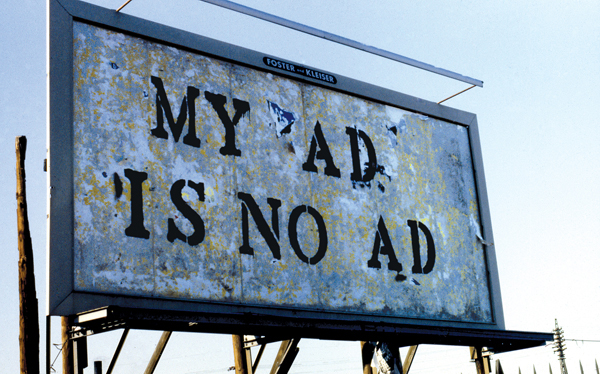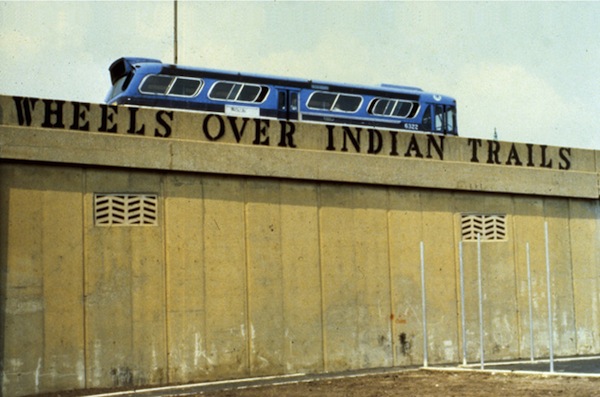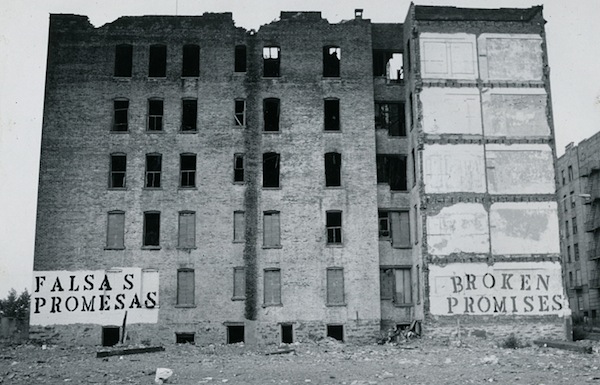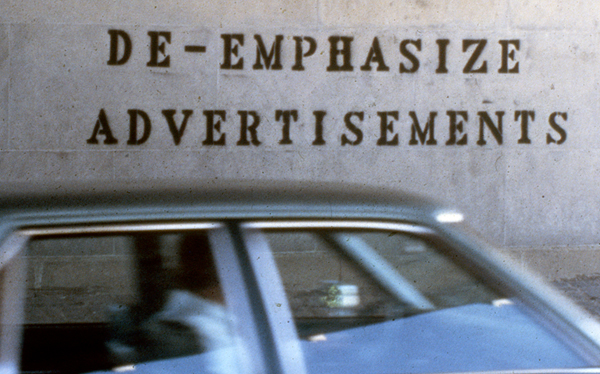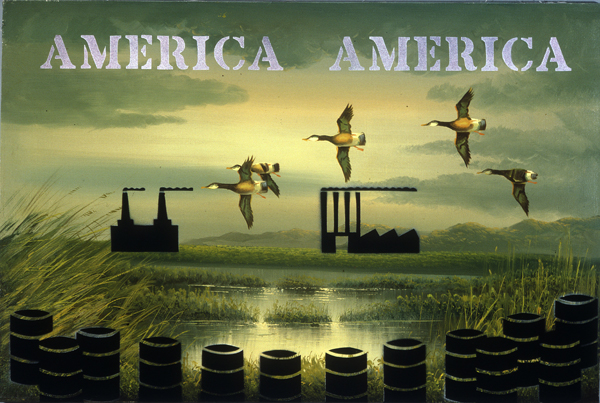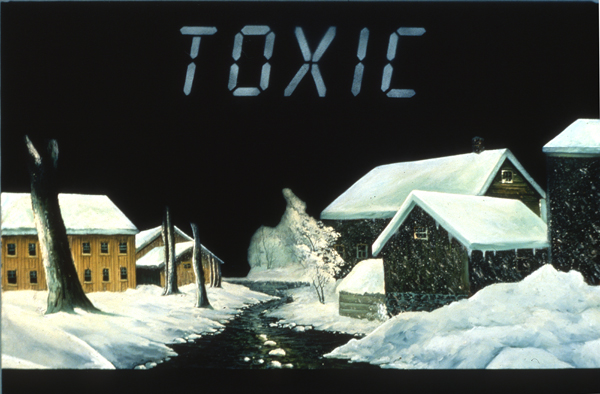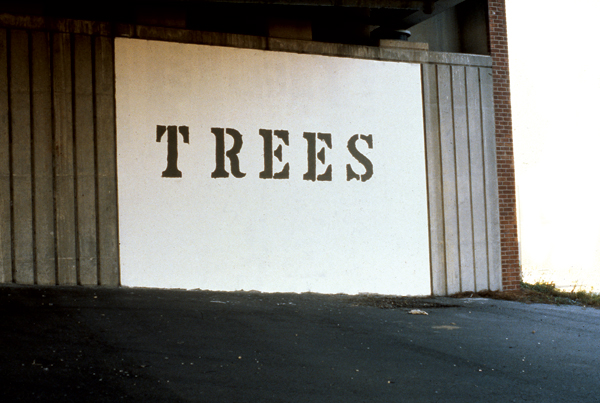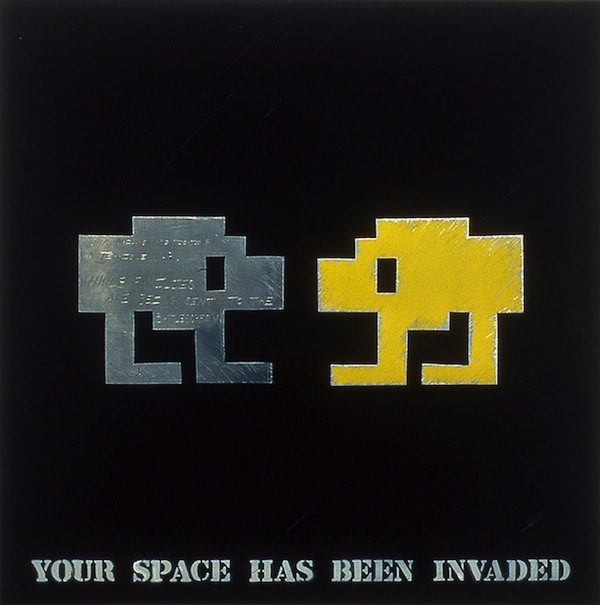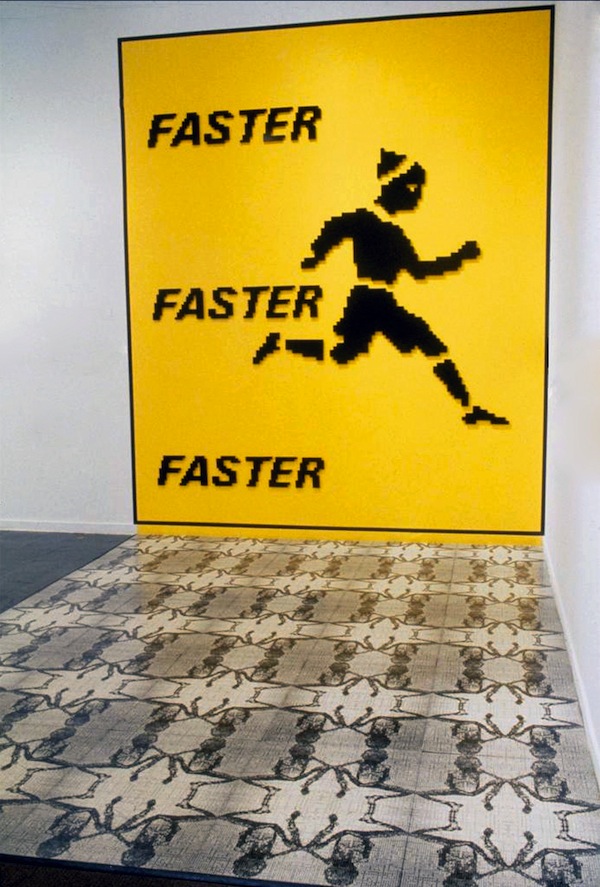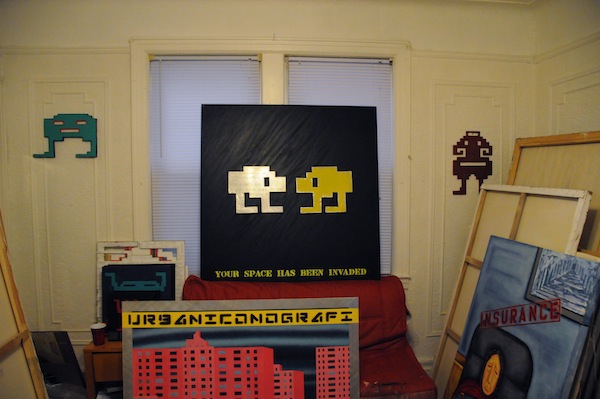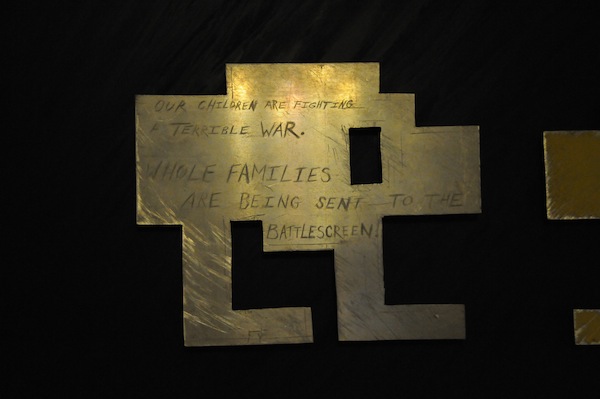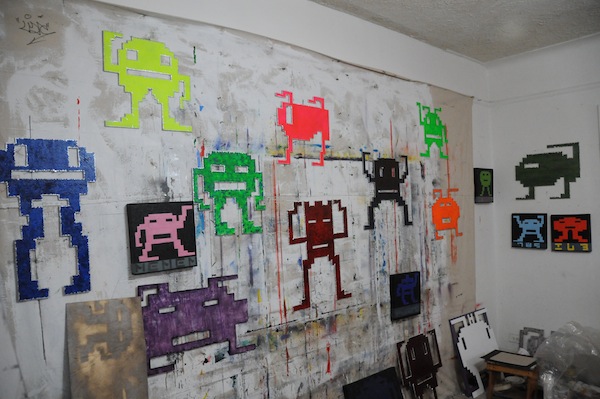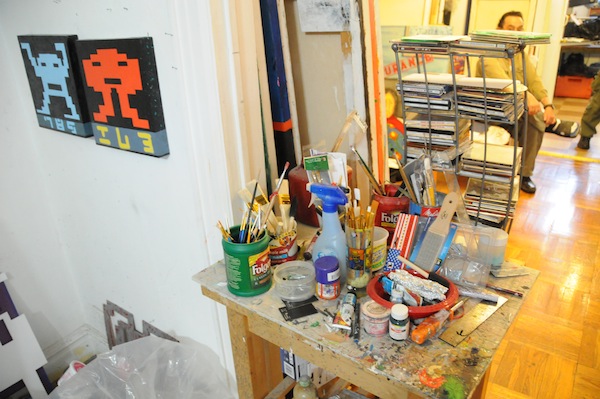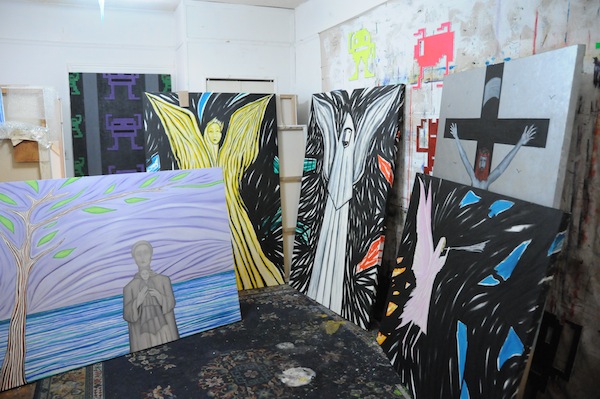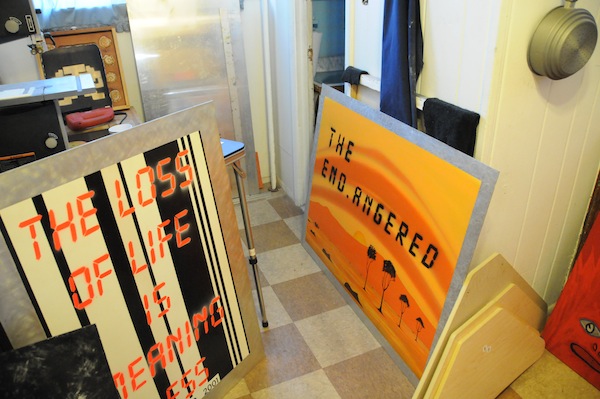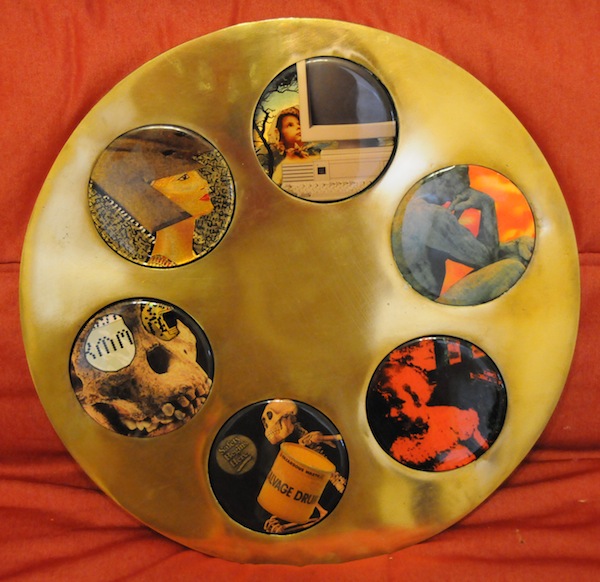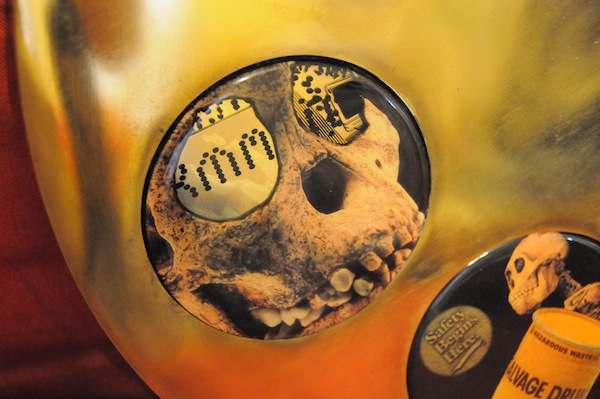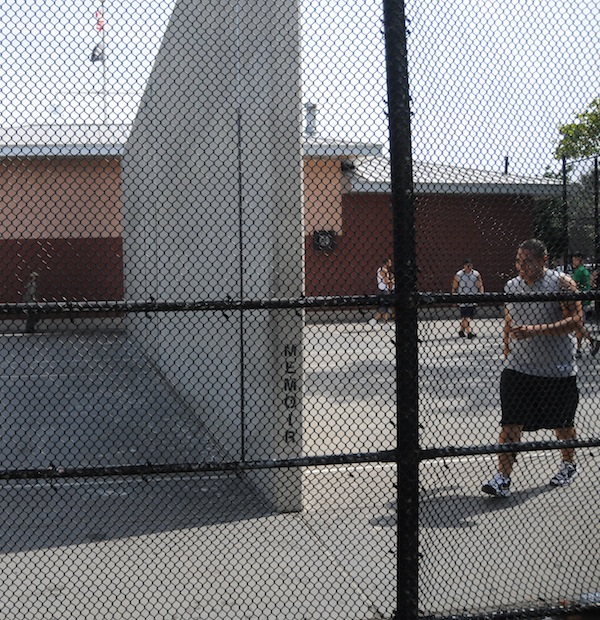
Sorry if some of these links are a bit dated, but hopefully they’re still interesting:
- Don Leicht, the original Space Invader, has a exhibition of his work on now at Mary Colby Studio & Gallery on City Island in the Bronx. Leicht has been making space invader characters for the street and for galleries since 1982, often in collaboration with John Fekner. Both Leicht and Fekner have never really embraced the spotlight in the way that others from their generation have (particularly in recent years), and so Leicht’s place in early New York street art often goes unacknowledged. Whereas Space Invader’s characters are generally lighthearted and fun and more about interesting placement than interesting content, Leicht’s content is political. His invaders, painted in camo, serve as a reminder/warning that war is real and of the relationship between videos games and the military.
- The app NO AD, which I was pretty excited about when it launched and even more excited about once I got to try it out myself, recently announced their next exhibition on the app. NO AD is working with the International Center of Photography to display images from their current exhibition, Sebastião Salgado: Genesis. I love that the ICP is into this idea. NO AD is a fantastic exhibition platform, but it’s also a bit of an odd one, so it’s very cool to see the ICP embracing both augmented reality technology and an anti-public-advertising platform. Click here for more info on the exhibition.
- Speaking of public advertising, this crazy thing happened in Hong Kong.
- And over on Hyperallergic, Julia Friedman addresses the major discrepancy in how New York City enforces laws relating to public advertising. Essentially, the current enforcement strategy seems to punish artists and activists while leaving corporate interests to do whatever they please.
- I really enjoyed this article on the painfulness of advertisers appropriating street art and graffiti for their own ends, to the point that Perrier actually replaced a mural of Nelson Mandela with an advertisement featuring the hashtag “#streetartbyperrier”.
- Speaking of water companies, street art and hashtags… The folks being the for-profit bottled water company WAT-AAH (aka Let Water be Water LLC, or as I like to call them “Evian for Kids”) sent The L.I.S.A. Project NYC a cease and desist letter for using a hashtag that they claimed to own the trademark for (they don’t). Animal has more on that ridiculous story.
- Jorge Rodríguez-Gerada created a massive piece on the National Mall. Impressive piece. Impressive location. Good stuff.
- Conor Harrington had a great show in NYC, at a pop up space with Lazarides Gallery from the UK. I went up for the opening, and despite the space being lit like a haunted house and seemingly pumped full of mist from a fog machine, the work looked even better than I had anticipated. Plenty of artists can paint traditionally beautiful paintings, and plenty of artists can use drips and tags and half finished elements and things like that to make their paintings look “street” or to make it look like they are saying “screw you traditional notions of beauty and fine art painting!” Few artists can do what Conor does, which is to utilize all of those styles and techniques, from beautifully staged scenes painted with perfection to all the different ways to make a painting look rough and cool, but utilize those things in the right balance and with respect. To Conor, it looks like a drip is no different than the a detailed brush stroke. The “disruptive” elements look like they belong. He isn’t trying to destroy painting. He’s trying to bring it to new heights, and he’s much better at it than most.
- It was a surprise to see that Jonathan Jones at The Guardian actually liked a recent Banksy piece, but then again it was a good piece with an even better story in the end.
- This article on the utter failure of a major “street art biennial” in Moscow is an absolute must-read.
- This fall I’ve seen (online) two interesting pieces of endurance art, both of them by female artists in New York City who took to endurance art to address what they see as crises.
- gilf and Natalie Renee Fasano walked 15 miles barefoot around the city. 60 million or more people worldwide live every day without shoes. Interestingly, Gilf’s project was not so much an awareness campaign as an opportunity for self-reflection that she documented and publicized. None of her Instagram posts on the performance provide information about what can be done about this problem, and the video documenting the work provides no context except the text “A day in the Shoes of the Shoeless with gilf!” On some level, I find that frustrating. But of course the work wasn’t about raising national awareness for this issue. gilf’s own description of the project makes that clear. It was more a project for herself. And that’s great and useful too, but on some level I can’t get over the missed opportunity here to make the project more than personal suffering/meditation and self-promotion. Why not simply say, “And if this project is bringing the issue of people without shoes to your attention and you want to help, here’s something you can do.”? Yes, it’s a personal project for self-reflection, but it’s also an artwork that was promoted all over the web. So, I’ll close by saying that if you do want to help provide shoes for people in need, Soles4Souls seems to be the place to go (thanks to Animal for that tip).
- Emma Sulkowicz has to be one of the bravest, most impressive people I’ve read about in a long time, and I almost hesitate to call what she’s doing an art piece, lest it devalue her actions in an age when so much art is devoid of the kind soul this particular performance/way of living requires. For nearly two months, Sulkowicz has been carrying her dorm room mattress with her to every class, every lunch break, every party, and everywhere else she goes, constantly, and she says she will continue to carry her mattress with her “for as long as I attend the same school as my rapist.” More about this piece, and the reaction she’s received from her fellow students at Columbia University, at Hyperallergic.
Photo by RJ Rushmore




